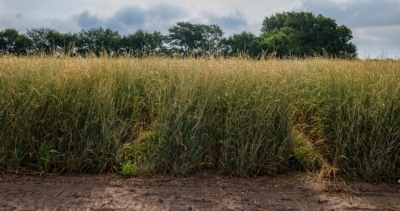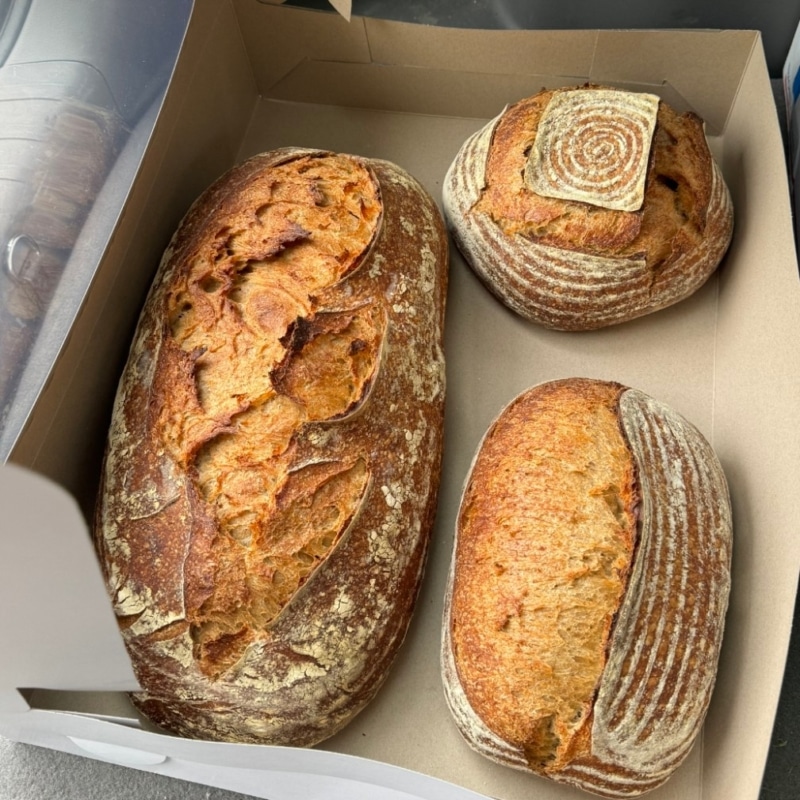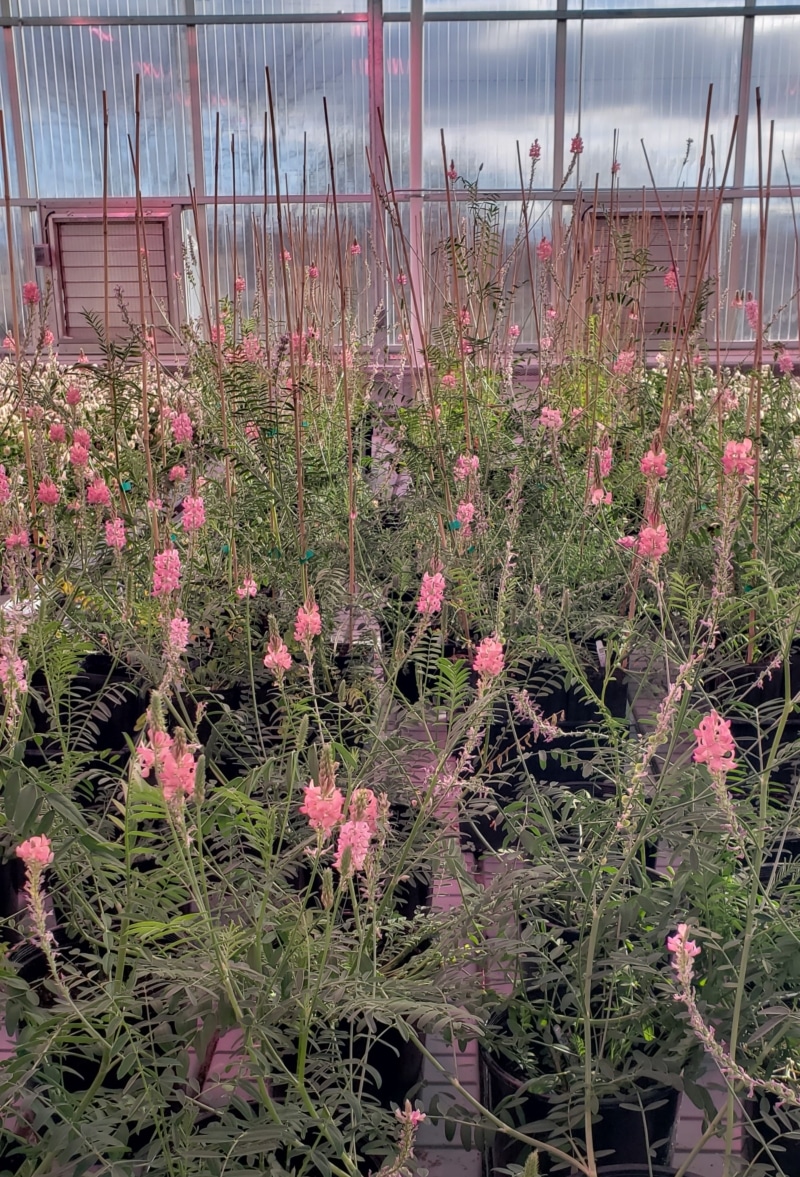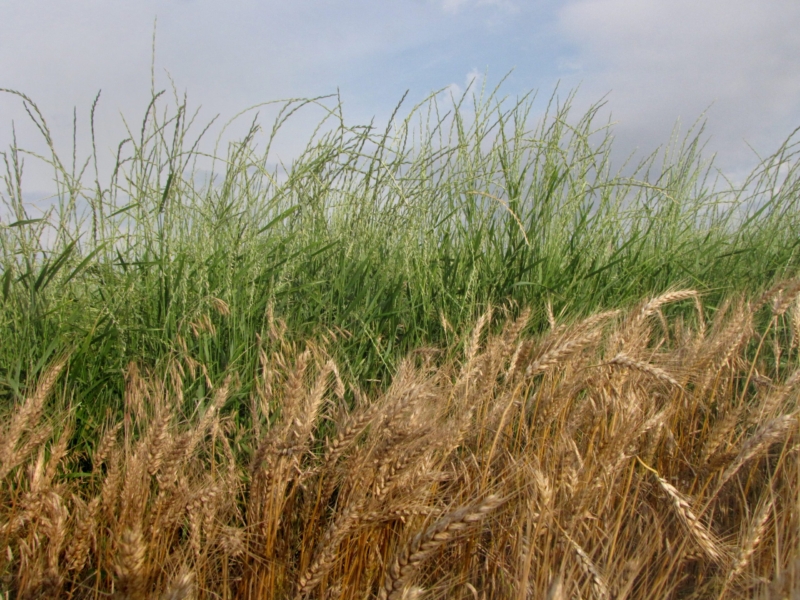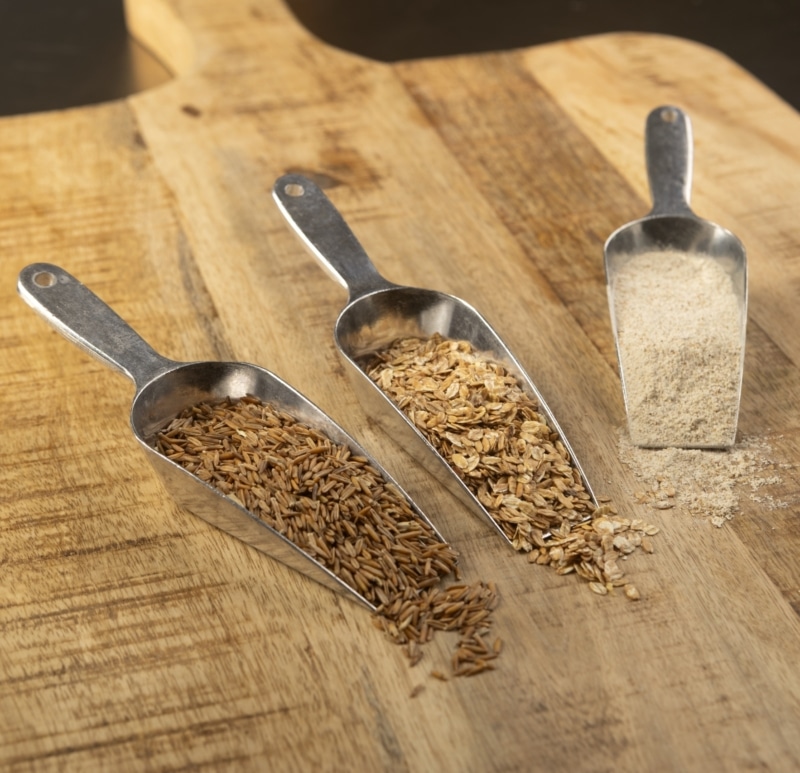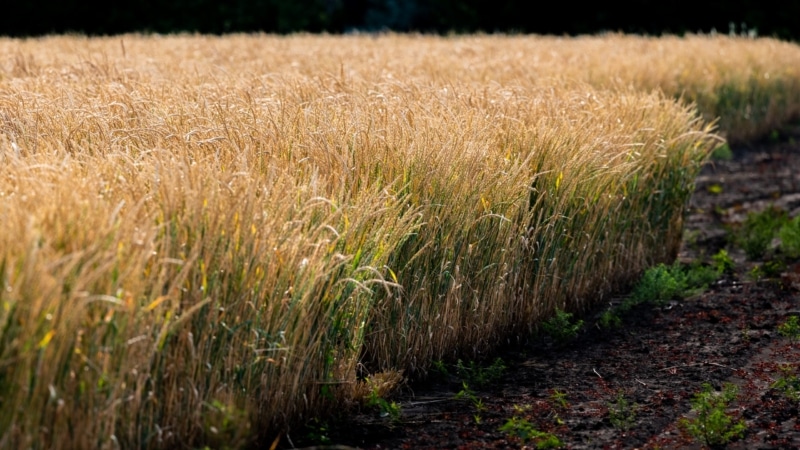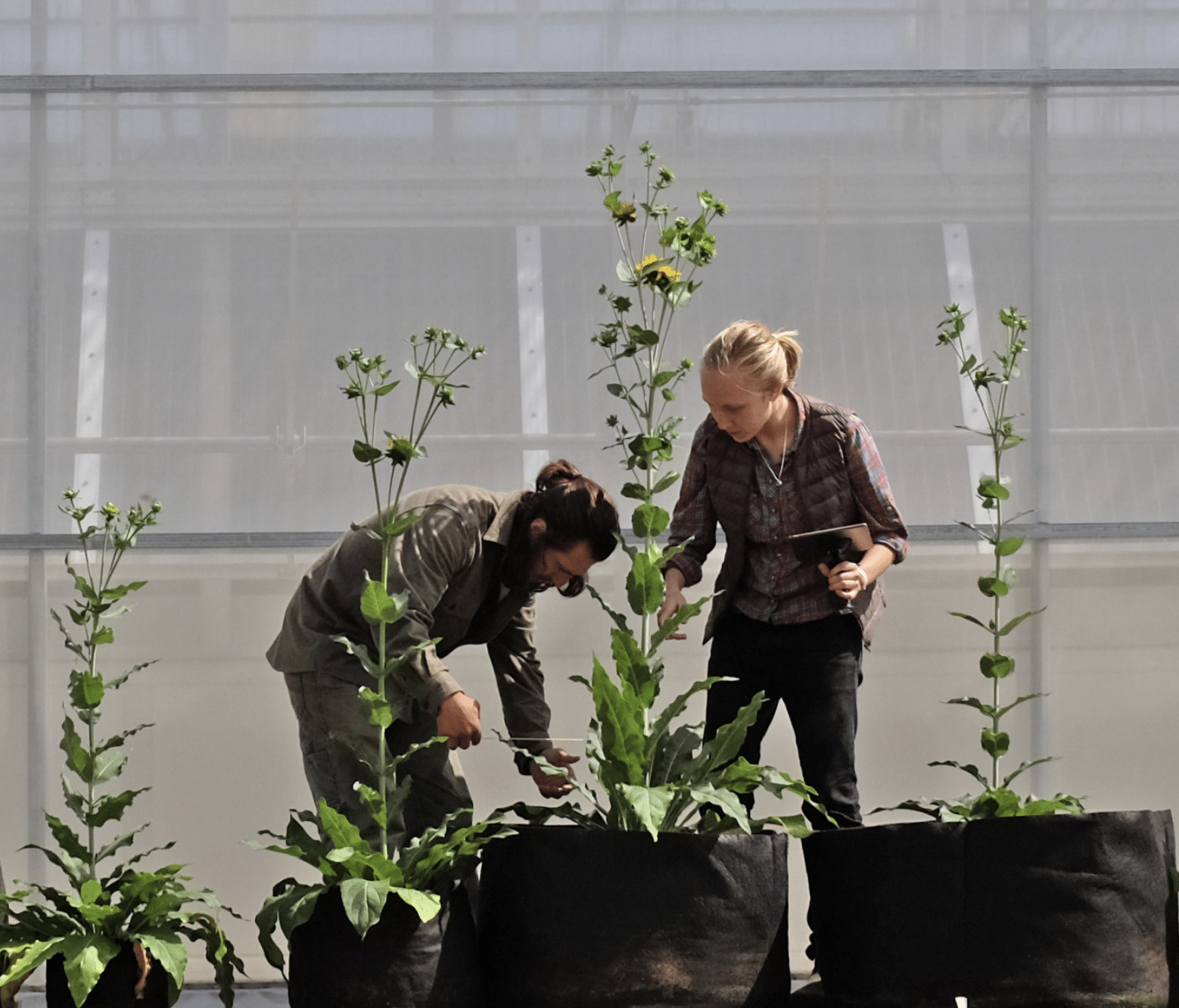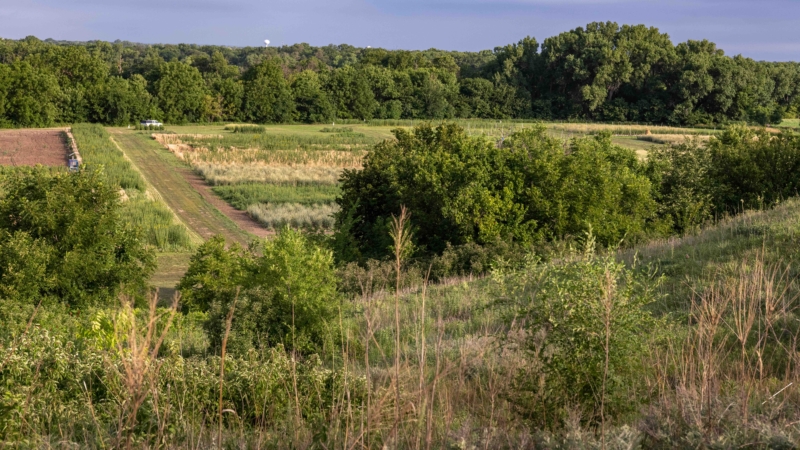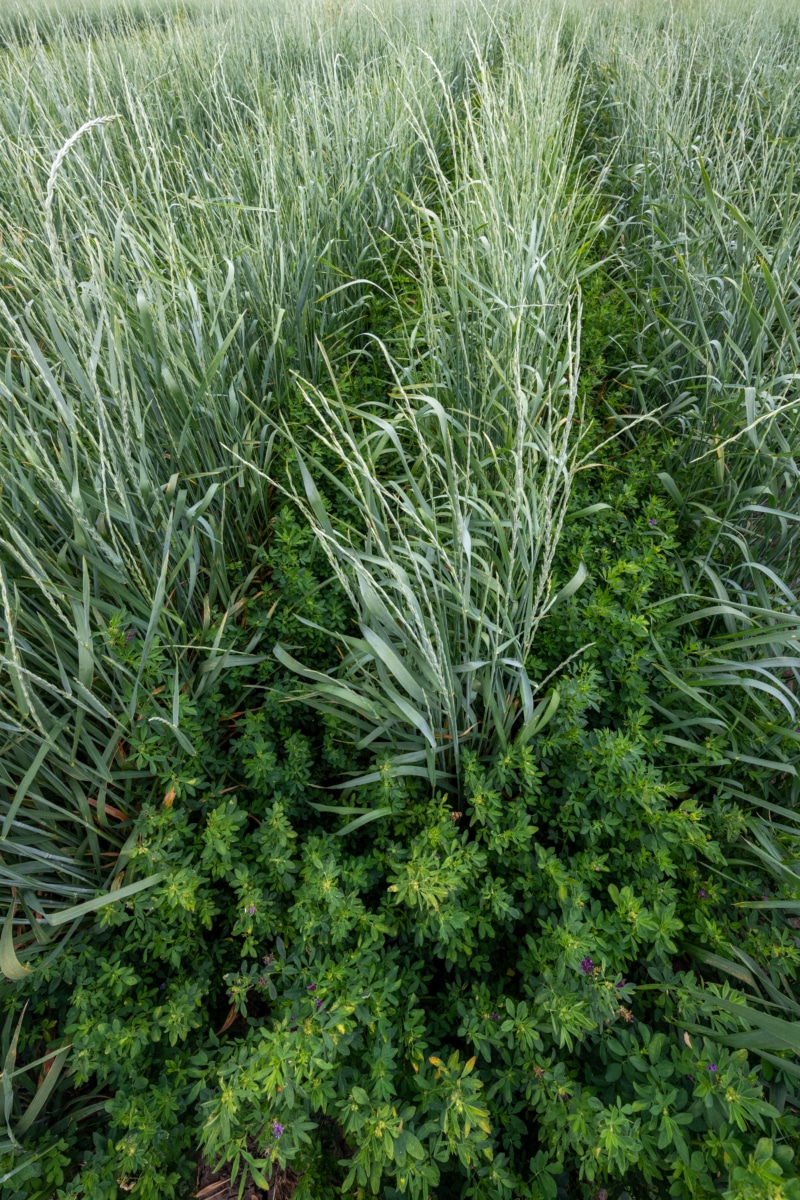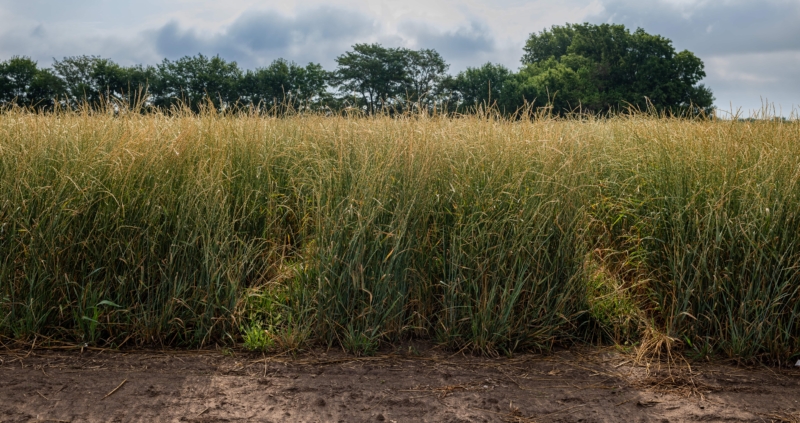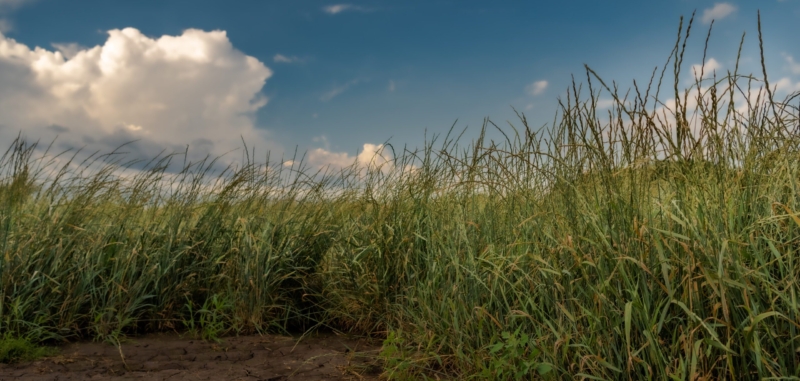Ebony Murrell, Lead Scientist in Crop Protection Ecology, collaborated with former Land Institute researchers Chase Stratton and Jarrod Fyie and USDA-ARS researcher William Morrison on a study assessing the impact of intercropping diverse crops like silphium integrifolium (a perennial oilseed in development at The Land Institute) with wheat to potentially optimize natural pest management strategies.
Given the multiple possible mechanisms for interspecific chemical interaction between adjacent heterospecific plants, phytochemical profiles, which include phytochemical defense compounds, of crop species could potentially be enhanced or altered by intercropping with phytochemically diverse neighbors. We assessed the influence of intercropping between phytochemically diverse plants on plant biomass and aerial volatile organic compound (VOC) emission profiles by intercropping sweetclover (Melilotus alba) and wheat (Triticum aestivum) with silflower (Silphium integrifolium) in AMF-inoculated soil. We also assessed the impact of intercropping on induced VOC profiles by conducting an in-situ, no-choice bioassay with fall armyworm (Spodoptera frugiperda). Of eight compound classes we identified across the three plant species, prenol lipids (terpenoids) were upregulated in silflower plants when monocropped with wheat and when herbivory was introduced. Carboxylic acids and organooxygen compounds were reduced in sweetclover when intercropped with silflower, but increased under herbivory. Uninfested wheat plants emitted more organooxygen compounds and fatty acyls than infested plants when intercropped with silflower, but not when monocropped. Wheat and sweetclover biomass increased when intercropped with silflower, but silflower biomass was unaffected by intercropping. This study showed that VOC emissions of plants from three diverse taxa are altered by both intercropping and herbivory in ways that may impact their resistance to insect herbivory. Further research into the role of intercropping on volatile profile emissions, and possible pest resistance in agroecological systems, could help farmers to design intercropping systems that optimize natural plant herbivory defenses, thus improving agricultural sustainability.
